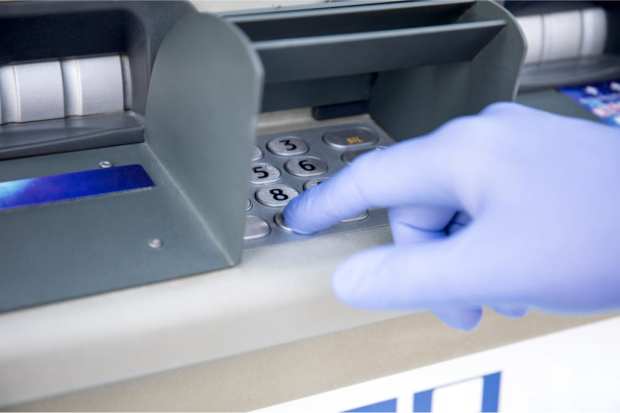Credit Unions Embracing Biometric ATMs Post-COVID

When the very first one appeared at a Barclays branch in London back in 1967, who could have imagined that the clever Automated Teller Machine (ATM) would emerge decades later as a hero of the great COVID-19 pandemic of 2020? Inventor John Shepherd-Barron would surely be pleased.
All throughout the pandemic as banks, credit unions and other financial institutions (FIs) shut down in whole or in part, the world’s network of ATMs hummed along, keeping people and businesses connected to cash and a remote menu of account services with always-on automated efficiency.
It’s unquestionably a turning point for this ubiquitous technology, and for its uses going forward. In PYMNTS’ May 2020 Credit Union Tracker® done in collaboration with PSCU, we learn that, “Online transactions were estimated before the pandemic to account for 57 percent of all transactions by 2025, but the same models now predict that as much as 67 percent of all transactions will be conducted online by that time. CUs are thus turning to a broad array of technologies — including ATMs — to extend end-to-end banking services, even as members seek to avoid brick-and-mortar branches.”
‘Elevate the ATM experience’
“ATMs have always been [extensions of] credit union branches, and this is never more evident than when branches face modified hours and temporary closures,” Glynn Frechette, senior vice president of Advisors Plus at PSCU told PYMNTS. “ATMs fill a critical void, not only for providing cash, but for handling deposits, transfers, balance inquiries and other related services.”
While use of ATMs fell during COVID-related lockdowns, Frechette noted that there has been a slight increase in ATM deposits particularly as the pandemic recedes. It’s fortuitous timing for CUs to rethink their ATM fleets, their operational integrity and the menu of services their network accommodates.
“A great place to start strategizing is to reflect back on the early phase of the pandemic,” Frechette told PYMNTS. “What were your members not able to accomplish with your ATMs? Cash is generally a given, but what about making deposits, transferring funds or making loan payments? Additionally, think of the role that safety now plays with payments. How can we make the ATM safer? Can you enable near field communication for contactless cards or begin accepting pre-staged, application-based withdrawals? By evaluating these opportunities, CUs can formulate plans to enhance and elevate the ATM experience.”
Biometrics By A Mile
A change in capabilities brings new acronyms. Automated Teller Machines (ATMs) are slowly morphing into Interactive Teller Machines (ITMs). With a nod to post-pandemic fears about touching things in general, new ATMs and newer ITMs are using biometrics to get around those tactile terrors.
“Biometric solutions offer touchless alternatives to typing PIN codes on keypads, for example, as they can scan consumers’ facial features and irises to authenticate their identities without physical contact, according to the May Credit Union Tracker®.
“Those who have used such technologies also report high levels of satisfaction with them, due in large part to their ease of use, data security and convenience,” the Tracker notes. “PYMNTS’ research shows that data security is the foremost reason for preferring biometrics, with 65.2 percent of satisfied users citing it as such. Adopting biometric verification tools thus presents a dual opportunity for CUs to enhance their ATMs’ security and their members’ experiences.”
